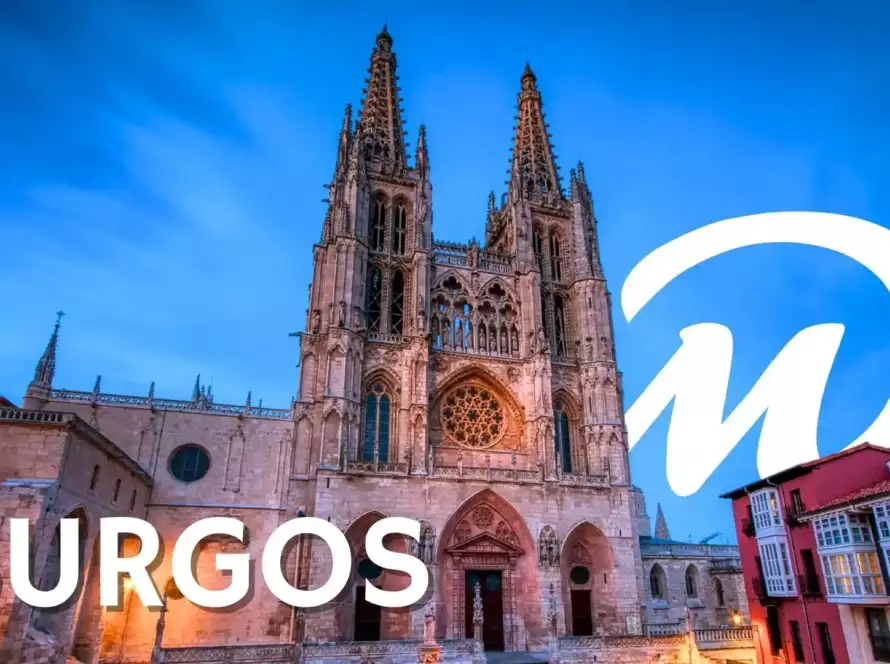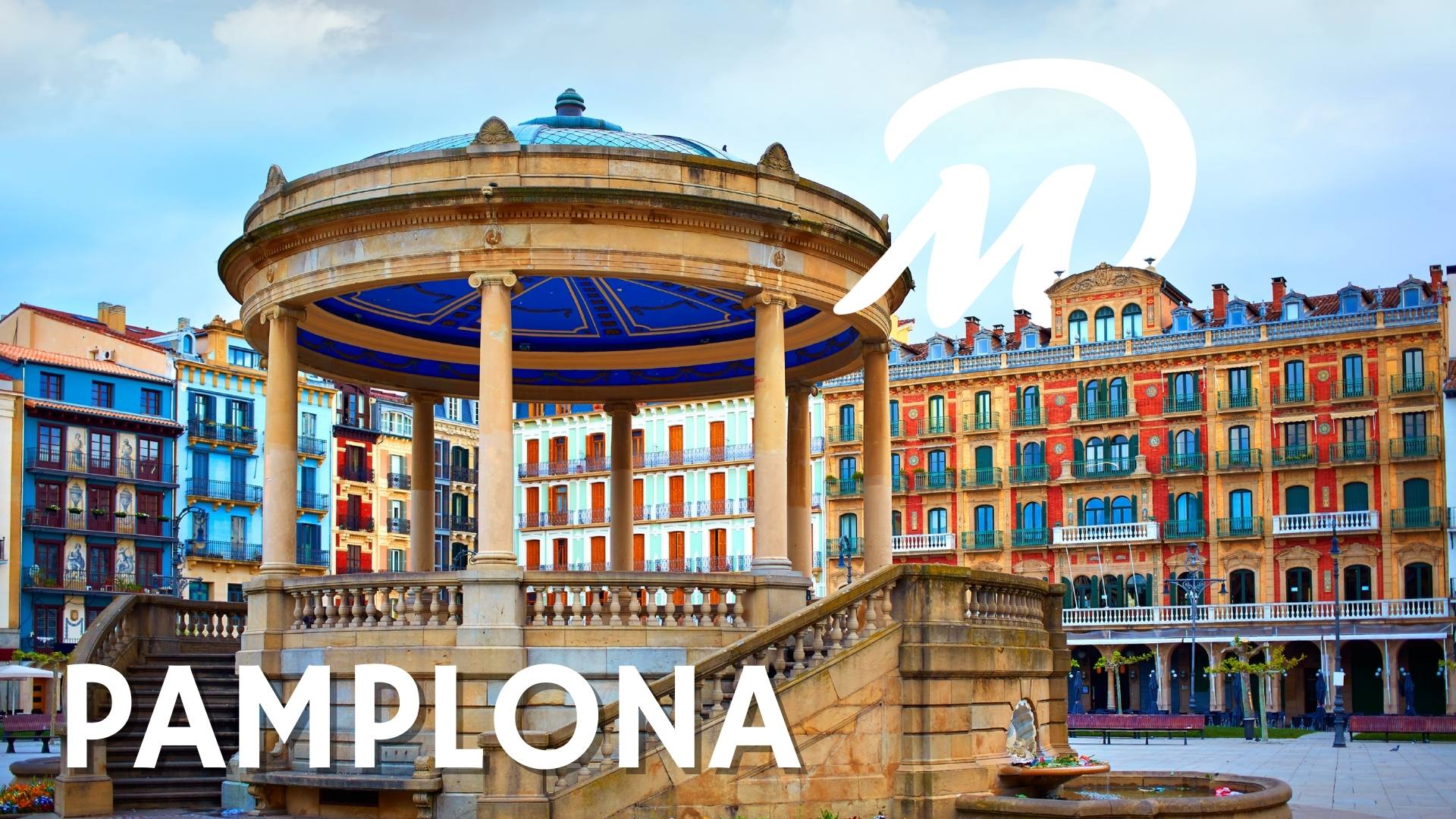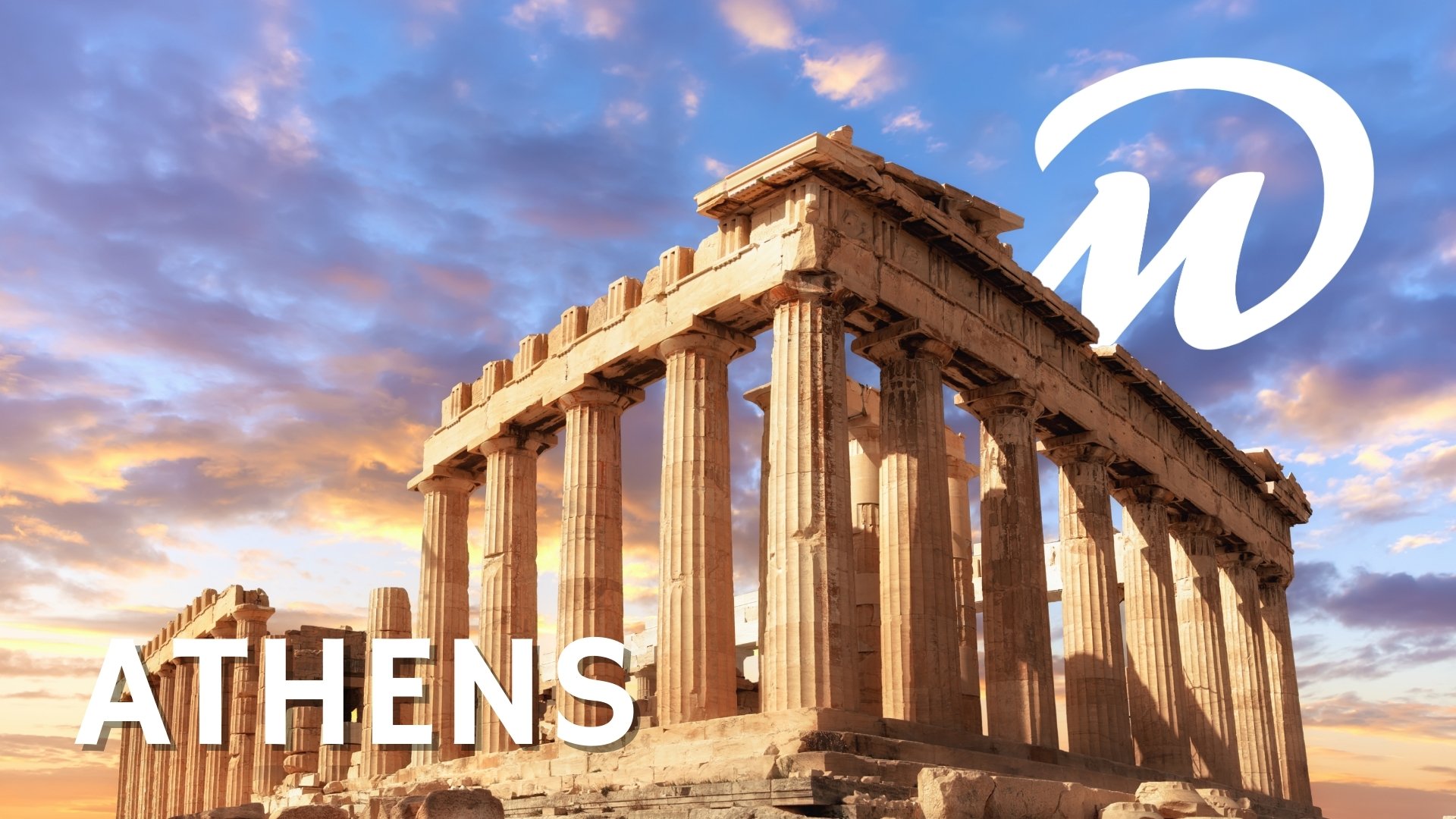Valencia, a coastal city in the east of Spain, captivates with its rich history, vibrant culture and delicious gastronomy, especially paella. Other things todo in Valencia include beautiful beaches and impressive architectural complexes such as the City of Arts and Sciences, a symbol of avant-garde and creativity.
If you are going to visit the city and want to discover amazing things to do in Valencia you are in the right place.
Discover the best things to do in Valencia thanks to DareMapp. Enjoy the best itinerary to visit this amazing city full of life.
⌛ Do you want to keep searching through blogs, or would you rather have your VALENCIA GUIDE ready right now?
The DareMapp app makes it easy. Enjoy the COMPLETE GUIDE ON YOUR PHONE and experience every corner your way — no schedules, no rush.
Things to do in Valencia, its History.
The history of Valencia is characterised by its richness and complexity, influenced by different cultures throughout the ages. Originally inhabited since prehistoric times, it acquired importance in Roman times, founded in 138 BC as “Valentia Edetanorum”. Under Roman rule, it developed into a notable economic and cultural centre.

The fall of the Roman Empire gave way to the Visigothic conquest and then to the Arab domination in the 8th century, under whom it was called “Balansiya” and prospered significantly. The Christian reconquest by James I of Aragon in 1238 marked the end of Muslim rule, integrating Valencia into the Crown of Aragon.
Throughout the Middle Ages and the Renaissance, Valencia experienced a period of splendour, excelling in commerce, art, and culture, remaining relevant despite facing conflicts, epidemics, and natural disasters in later centuries. In the 20th century, it underwent a transformation into a modern, cosmopolitan metropolis. Today, Valencia is a city that fuses its historical heritage with modernity, known for its monuments, such as the Lonja de la Seda and the Torres de Serranos, together with contemporary projects such as the City of Arts and Sciences, consolidating itself as an outstanding tourist destination.
Looking for things to do in Valencia? Start here!
Things to do in Valencia in 2 days.
Visit the Bioparc
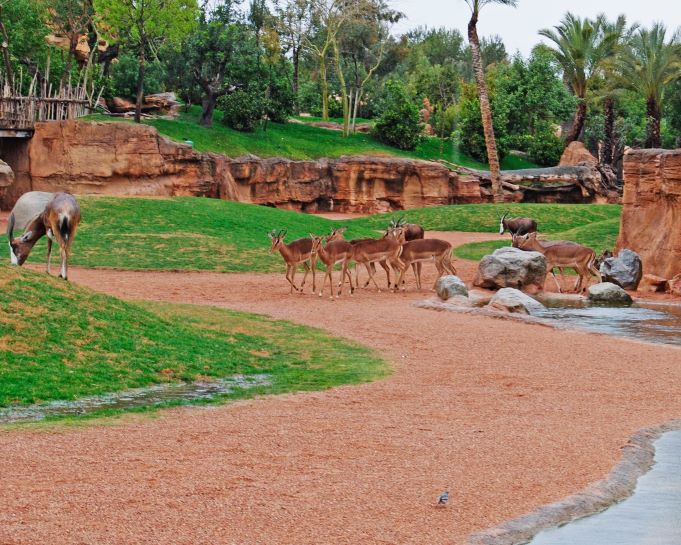
An innovative zoological park where barriers are practically invisible and the animals roam free. It covers an area of 100,000 square metres and is located in the park at the head of the old Turia riverbed.
the concept of zoo-immersion is to bring the visitor completely into the habitat of the animals and not the other way around, as is the case with traditional zoos.
The aim of the Bioparc is to promote respect for animals and to raise public awareness of environmental protection
You can see everything from zebras, lions and elephants to gorillas, buffaloes and lemurs.
Don’t miss these amazing things to do in Valencia.
The Bioparc is open 365 days a year and opening hours will depend on the hours of sunlight at any given time of the year. Your adventure begins with these things to do in Valencia. Check your no-queues tickets here.
Go to the Turia Gardens
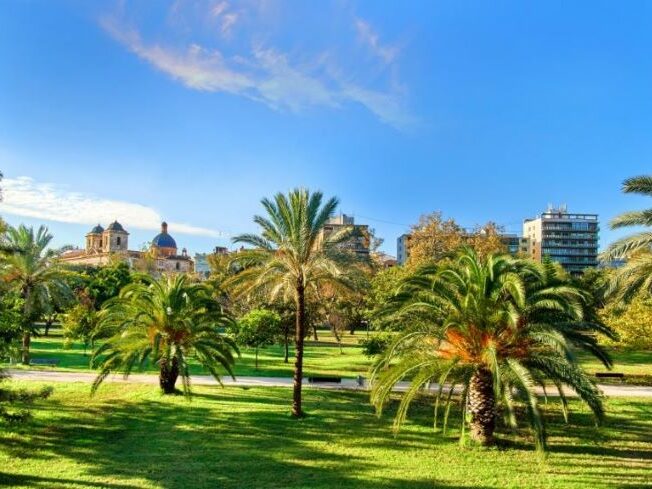
One of the largest urban natural parks in Spain, a green space of more than nine kilometres that crosses the city with recreational and sports areas and romantic corners where you can lose yourself.
This immense garden a top visit among the things to do in Valencia is built on the old course of the Turia River, which was diverted to avoid the continuous flooding that the city suffered.
It is bordered by the Parque de Cabecera and the Bioparc to the west, and the avant-garde City of Arts and Sciences on the opposite side, almost at the mouth of the river.
The Turia Garden has a network of public toilets designed to ensure that you have every comfort at your disposal during your stay in this natural space.
The toilets are perfectly integrated with the environment, are sustainable, safe and accessible for people with reduced mobility.
TURN YOUR VISIT TO VALENCIA into an unforgettable experience.
The DareMapp app guides you with stories, fun facts, and routes that help you explore the city in depth, without missing a thing
Explore the Quart Towers
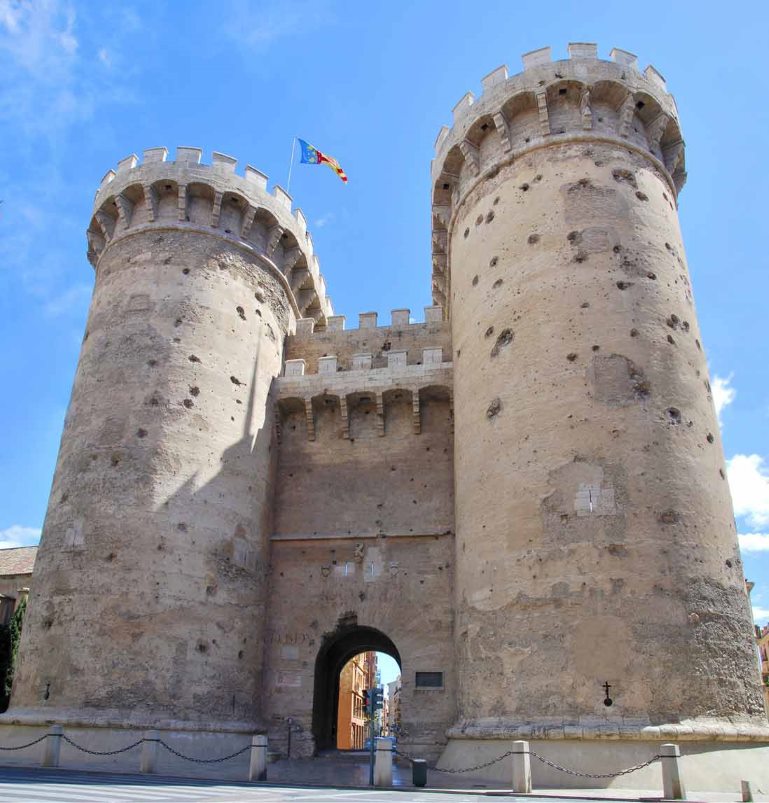
The Quart Towers another of the things to in Valencia, are an example of late Gothic military construction. Designed as defensive gates for the city, until 1874 they were called Torres de la Cal (Lime Towers), because in the 18th century all limestone entering Valencia was required to pass through them. The rear façade was uncovered so that the interior could be seen, which for a time was used as a women’s prison.
They were key to stopping the Napoleonic troops during the war against the French in 1808. The walls on the west side of the towers have several holes in them. At first glance it would appear to be part of the deterioration of this monument, but in reality they are the marks left by bullets from French cannons in 1808.
During this war, Valencia was besieged and the towers had to resist the bombardment of the Napoleonic troops, under the command of Marshal Moncey, who sought to establish French rule in Spain.
Eat at Carmen´s neighbourhood
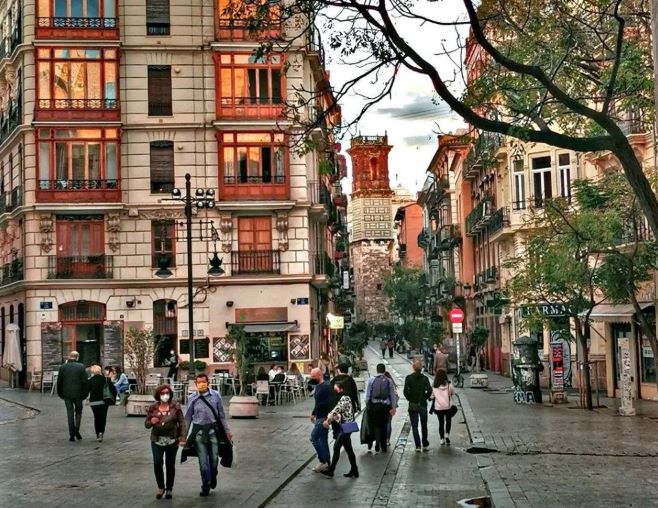
If you visit the city, the Barrio del Carmen is among the key things to do in Valencia. Located in the northwest corner of the historic quarter, it is the best known of all the districts in Valencia. It gets its name from the church and convent of Carmen Calzado.
We are talking about an area of Ciutat Vella with a thousand years of history and with magnificent examples of medieval architecture, a rich artistic heritage, hundreds of historical anecdotes and the origin of a good number of local legends.
The neighbourhood grew up enclosed between two walls, one Muslim and the other Christian, in order to better defend the city. The Monastery of Nuestra Señora del Carmen was originally built outside the Muslim walls in 1281 and it was not until 1356 that the new Christian fortification was built. Visit these neighbourhood among these things to do in Valencia.
View the Serranos Towers
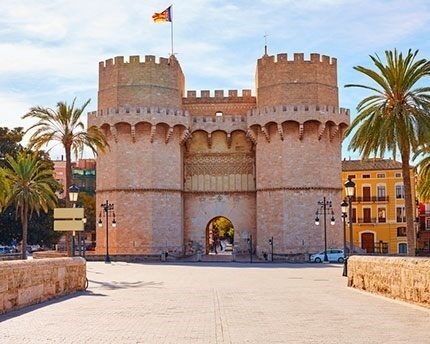
It is one of the two gates of the late medieval, in addition to the Quart Towers, is the Serranos Towers.
They were built in the 14th century by the master builder Pere Balaguer, between 1392 and 1398, as a symbol for a city that was experiencing a period of splendour and commercial expansion. He was inspired by other Gothic gates, mainly the Royal Gate of the Monastery of Poblet.
The Serranos Gateway, which for several centuries was the main access to the city from the north, is flanked by two huge pentagonal towers joined by a central body framed by a large semicircular arch.
The Serranos Towers were used both for defensive purposes and as a triumphal arch. Nowadays, the most important event that takes place at its foot is the Crida, a call made by the Fallera Mayor de València on the last Sunday in February to invite Valencians and visitors, welcoming them to the Fallas festival.
If you don´t know other things to do in Valencia this visiting these towers can be a good idea.
Enjoy the Fine Arts Museum
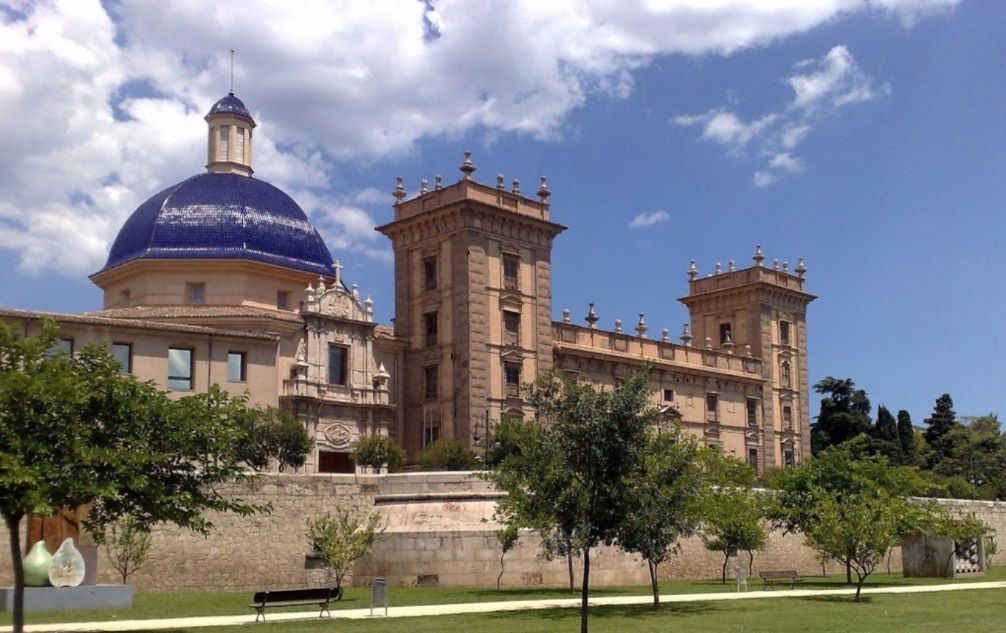
The Museum of Fine Arts is the most important museum in the Valencian Community. From its opening in 1839 to the present day, almost two centuries have passed, during which time it has witnessed numerous events linked to the historical development of the city of Valencia. Its art collections are mainly made up of a large collection of paintings.
It also has a large collection of drawings and engravings, as well as sculptures, archaeological pieces, architectural fragments, photographs and decorative arts. Internationally renowned artists such as Pintoricchio, Andrea del Sarto, Van Dyck, Murillo, Velázquez, El Greco and Goya are also among its exhibits
The Museum of Fine Arts in Valencia has among its collections 42 works by Joaquín Sorolla, a Valencian artist of national and international renown. In the museum’s Sala Sorolla you can take a journey through his artistic life.
Cross the Valldigma Gateway
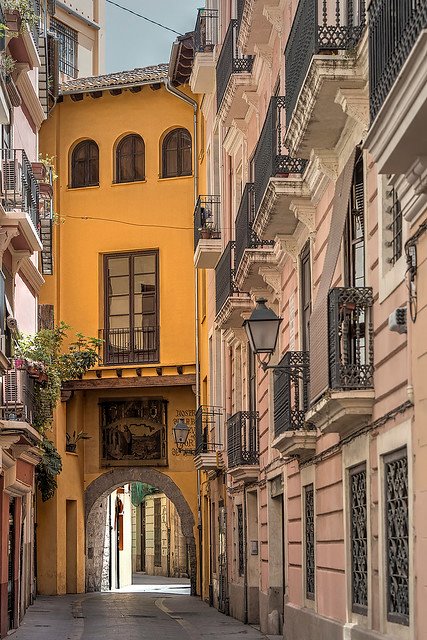
Another place with history and great beauty among the things to do in Valencia is the Portal de Valldigma.
It is a gateway opened in 1400 in the Islamic wall to communicate the city with the moreria, a suburb that was established around the Plaza de Mosen Sorell after the Christian conquest of the city.
Architecturally, it is a semicircular arch with a slight advancement of the imposts that resembles the Arab horseshoe arches.
(curiosity) (one of the first printing presses of the Iberian Peninsula was installed here in 1474 by the master Lambert Palmart. )
This other of the keys out of the things to do in Valencia for tourists, so activate your camera and photograph this spot and share it on our social network. If you want you can appear on it.
Visit the Palace of the Generalitat
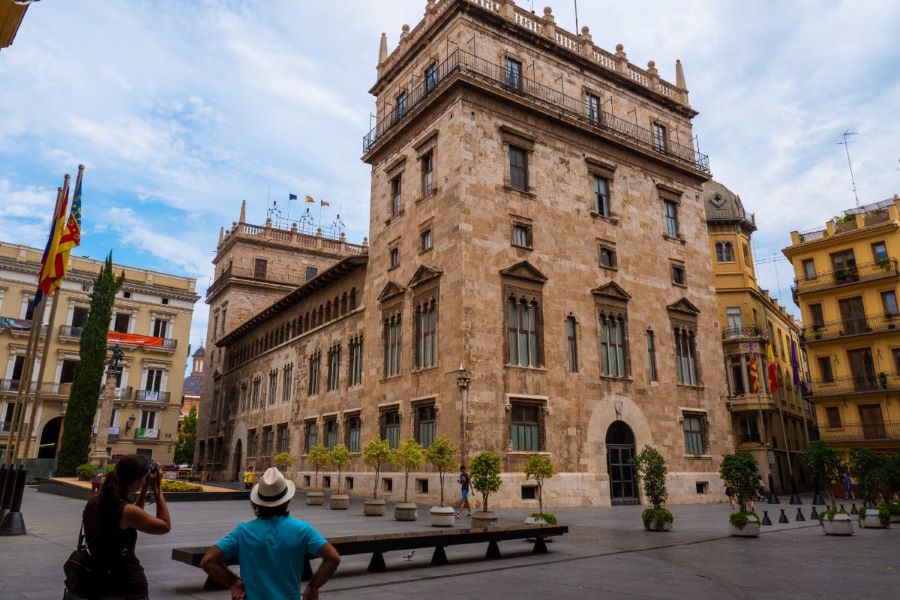
Another historical builing top in the things to do in Valencia is the Palau de la Generalitat.
Its the central building of the self-government of the Comunitat Valenciana and it connects in perfect harmony with the Cathedral and the Basilica of the Virgin.
Its construction began in 1421 and continued throughout the 16th century.
It is late Gothic in style, as can be seen in its internal layout and the low elements of its façades, with a later Renaissance extension.
The palace is arranged on three floors, with rectangular windows on the ground floor, triple windows with columns on the main floor and a gallery on the upper floor. A Renaissance tower was added in the 16th century.
Toss a coin Turia Fountain
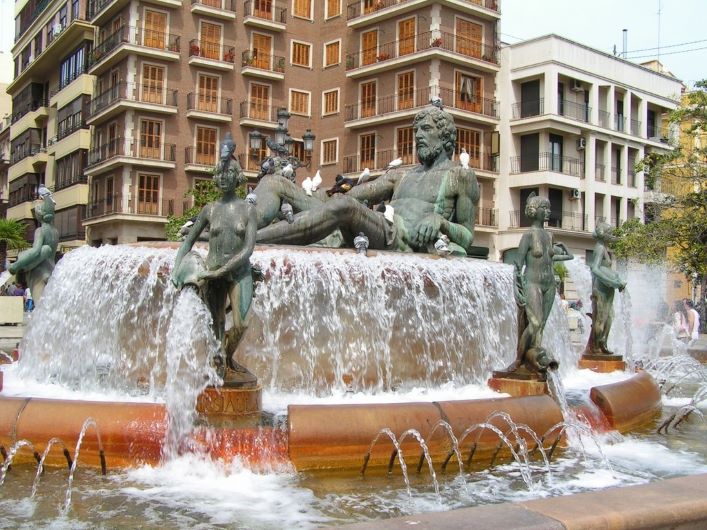
The Turia Fountain is an emblematic monument, and its located in the Plaza de la Virgen. It is a fountain that represents the river Turia that irrigates the huerta of Valencia.
It is a bronze work by the sculptor Manuel Silvestre Montesinos, with an allegorical representation of the river surrounded by eight naked female figures wearing farmwomen’s headdresses, representing the eight most important irrigation channels of the Vega that water the fertile Valencian market gardens.
The central figure symbolises the river Turia and as it is very similar to the Roman figure of the god Neptune, this monument is known as the Fountain of Neptune.
💡 DID YOU KNOW… the Turia Fountain pays tribute to the Water Court, the oldest justice institution in Europe?
Don’t just take a photo. With the DareMapp app, uncover all its secrets as you explore Valencia with your guide on your phone.
Explore the Plaza de la Virgen
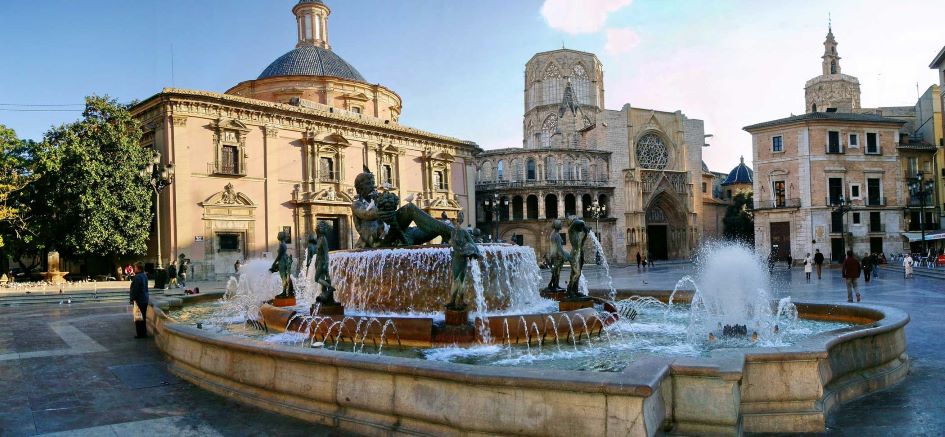
The Plaza de la Virgen is an important place to visit and one of the things to do in Valencia, with a great deal of history and culture. It is built on the site of an ancient Roman forum, and in addition to the fountain, the square is also home to other important monuments such as the Valencia Cathedral and the Palace of the Generalitat.
It is a very popular place with tourists and is also the scene of important events and celebrations, such as the Fallas, a traditional Valencian festival. The Turia fountain and the Plaza de la Virgen are popular meeting points for the city’s inhabitants and visitors who wish to enjoy its beauty and atmosphere.
It is the point where Valencia began to be built. But it is also a very lively place where the present of the city takes place, among large terraces, cafés and bars.
Visit the Basilica of the Desamparados
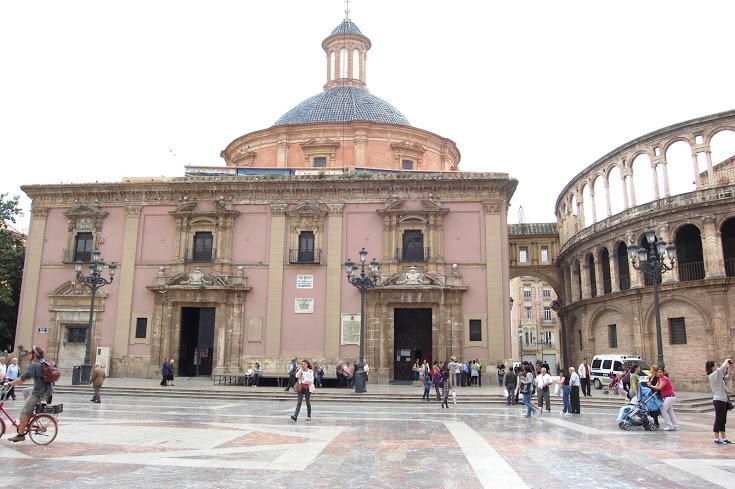
Anothee key visit among the things to do in Valencia is ecploring the Basilica.
A temple dedicated to the patron saint of the city, it is the main religious building and was built during the 17th century and, at the same time, the first new Baroque building.
It has three significant aspects:
– It is the only church in the historic centre that is not built on top of old parish churches or convents, but is a new construction.
-The dome is not located in the centre, but is displaced towards the Cathedral.
-The presence of the camarín (small chapel), a highly significant Baroque element and one of the first known in Spain and one of the first to be seen in Valencia and one f the things to do in Valencia.
The Royal Basilica of Our Lady of the Forsaken houses the museum dedicated to the Patron Saint of Valencia in its own building.
Go to the Court of the Waters
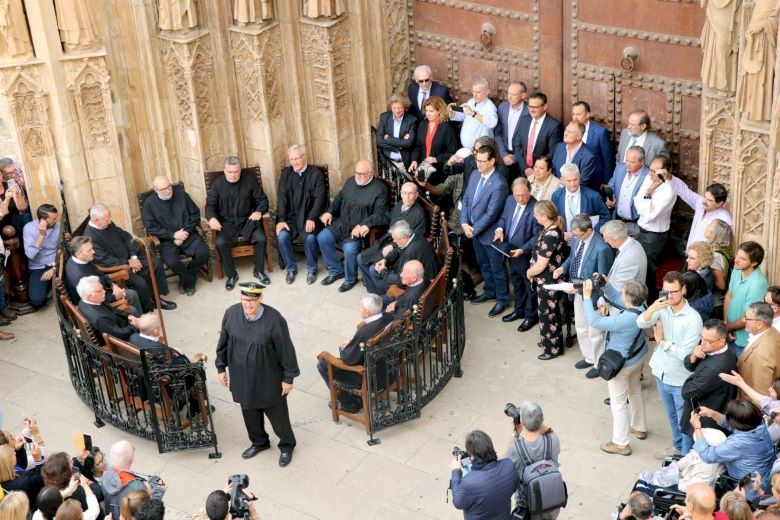
In the Puerta de los Apóstoles (Apostles’ Gate) of the Cathedral we must also see the Tribunal de las Aguas (Water Tribunal) in Valencia, a rite fervently preserved over a millennium. Justice is dispensed through an oral process in the Valencian language and its decisions are not subject to appeal.
The Tribunal of the Waters is a top among the things to do in Valencia, being the only legislative structure that remains from those established by Jaime I. The Arabs already practised this irrigation system, which the monarch formally established, based on the distribution of water from the Turia. It is made up of eight farmers, still wearing the black blouse typical of the people of the Huerta, who are democratically elected every two years by the remaining irrigators of the Huerta. Seated in a circle on wooden and leather armchairs dating from the 17th century, they are vested with a certain authority.
Create your dream itinerary with our things to do in Valencia suggestions.
Tour the Santa Maria Cathedral
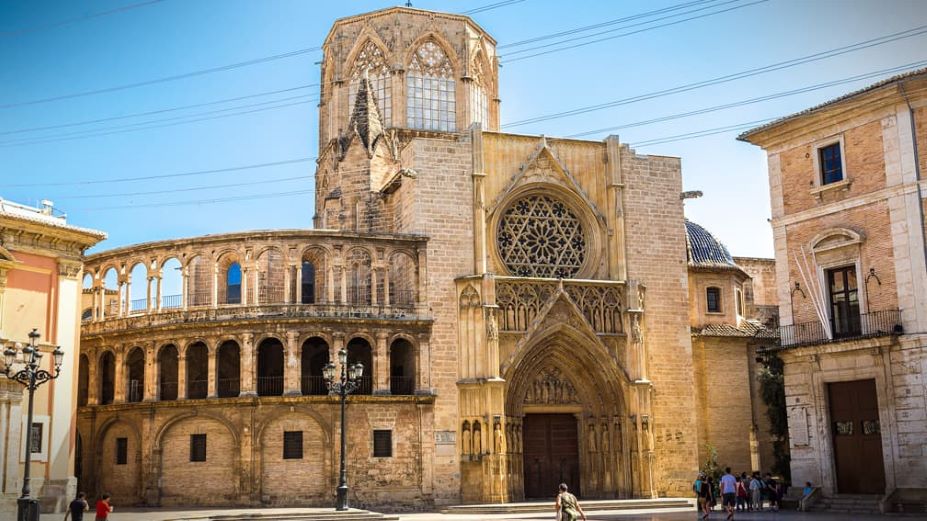
The Cathedral, in Gothic style, is the main great temple to see in Valencia, and its Miguelete tower is one of the symbols of the city, being one of the most popualr things to do in Valencia.
The Cathedral was built on the site of a former mosque and began to be erected in the 13th century, although it underwent numerous alterations until the 17th century. Various architectural styles converge here, with a clear predominance of Gothic. One of the jewels of the interior of the temple is the Chapel of the Holy Chalice, the old chapterhouse, with its beautiful star vault, an image of heaven with the 12 apostles and the coronation of the Virgin.
Among all its objects is the relic of the Holy Chalice, a vessel from the 1st century AD, which, according to tradition, Jesus used to institute the Eucharist. Meanwhile, on the outside of the cathedral, the Puerta del Palau, the oldest door in the church, in Romanesque style with Mudejar elements, and the Puerta de los Apóstoles (14th century) stand out. Here, another of the events part of the things to do in Valencia every Thursday is the Tribunal de las Aguas at the gate we saw earlier.
Walk by the Miguelete Tower. “Micalet”

At the back of the Cathedral we find the Miguelete tower.
It is the bell tower of the Cathedral. With 50.85 metres high and was built between 1381 and 1424 by Andrés Juliá and others.
It is accessed from inside the Cathedral by a spiral staircase with 207 steps. An 18th century belfry crowns the Miguelete.
Make memories with these incredible Things to do in Valencia.
Take a look at The Silk Exchange
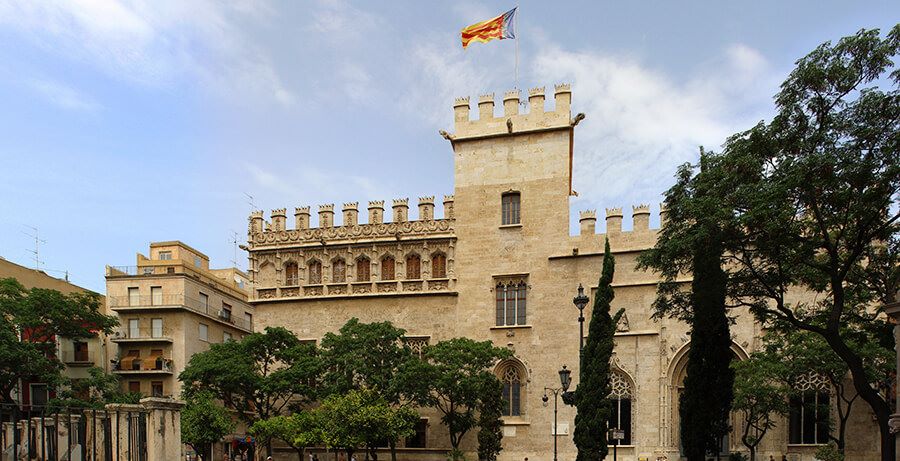
La Lonja is one of the most characteristic things to do Valencia, as well as being one of the most famous civil Gothic monuments that Europe has to offer. It has enjoyed the high distinction of National Historic-Artistic Monument since 4 June 1931 and was declared a UNESCO World Heritage Site on 5 December 1996.
At the end of the 13th century, the old Lonja became insufficient due to the prosperity of the city, so in 1469 it was decided to start building a new Lonja. The first stone was laid in 1492, although work began a year later. The main figure involved in the construction was Pere Compte, a citizen of Valencia, engineer and architect at the same time.
This building reflects a golden age that you can imagine as you walk through its rooms. The Sala de Contratación is the best known, a large space with eight columns supporting the vaults and dividing the space into three naves. The Central Tower housed the chapel and the prison for merchants in arrears, who were unable to pay their debts. Finally, in Valencia, inside the Lonja, we must see the Consulado del Mar, with a splendid sculpted wooden coffered ceiling and a large canvas by Espinosa that presides over the hall. The Garden, known as the Patio de los Naranjos, unifies the whole with its perfect rectangle. Check your tickets for the museum here.
See the Church of Santos Juanes
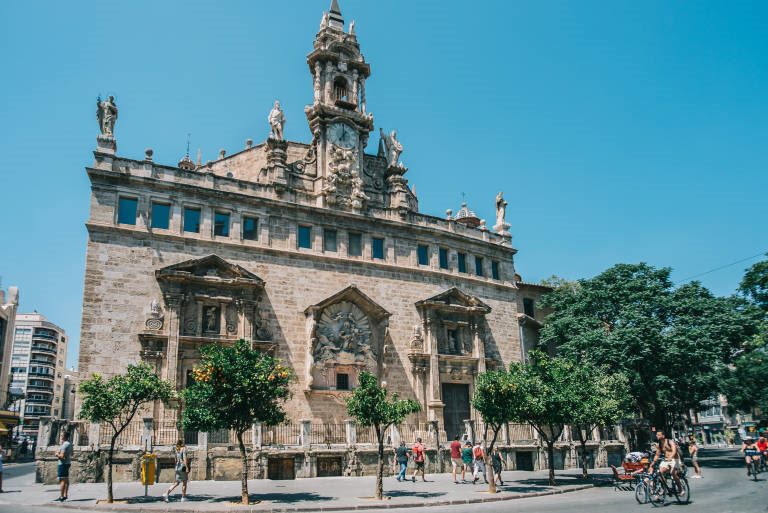
This temple is another example of a former mosque on top of which a Catholic church was built outside the city walls in 1240. It was originally a Gothic construction which, as a result of renovations after fires throughout its history, ended up having its current Baroque appearance in the 17th century. Its Gothic past can be seen in the single nave, the buttresses and the large covered rose window, known as “la O de Sant Joan”, which, contrary to what it might seem, has always remained covered.
COntinue reading and discover these things to do in Valencia.
Eat at the Central Market
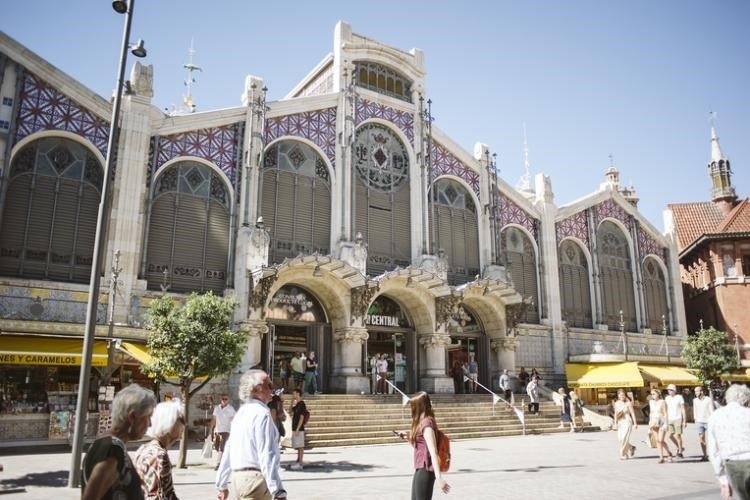
If you are a lover of gastronomy and enjoy fresh produce, its colour and flavour, and value the richness, variety and quality of the cuisine, Valencia’s Central Market is a paradise not to be missed. It is a must-see in this city, a gigantic larder of modernist architecture, which contains all the fresh produce from the market garden and all the flavour and smell of the Mediterranean inside. Don’t hesitate, take a stroll around the Central Market top among these things to do in Valencia.
The largest fresh produce market in Europe, as well as standing out for its rich and varied food offer, is located in one of the most emblematic modernist buildings in the city. With a surface area of more than 8,000 square metres, it is full of decorative allusions to the products of the orchards and gardens is antoher must-do visit in our list of things to do in Valencia.
💫 You’re just one click away from turning this reading into a real adventure.
With the DareMapp app, have the guide to Valencia on your phone, with no schedules or groups.
🗺️ Your route through Valencia, with DareMapp
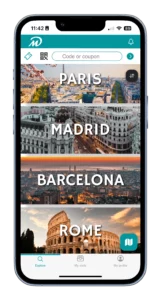
Tips to travel with peace of mind
When everything is ready — flights, hotel, itinerary — there are only two more things you need to travel worry-free: a good internet connection and reliable travel insurance.
✔ Get an international eSIM already set up on your phone. No need to change your SIM card, search for Wi-Fi, or pay for roaming. Activate it before your trip and enjoy unlimited data from the very first minute, wherever you are.
✔ Take out travel insurance that includes medical assistance 24/7, coverage for cancellations, theft, and — most importantly — advance payment of all medical expenses without you having to pay, wherever you are. Because in a new country, what matters most is feeling safe. Moreover, DareMapp offers you a 5% discount.
Both services can be arranged online in less than 5 minutes, with no paperwork required.
Don’t leave it to the last minute!
👉 Activate your Holafly eSIM at the best price here.
👉 Take out your travel insurance with IATI and get a 5% discount.
Buy a souvenir at the Plaza Redonda
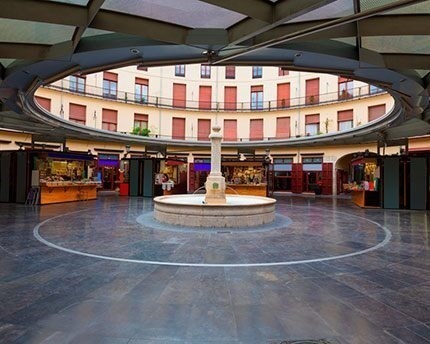
Another important visit among the things to do in Valencia is the Plaza Redonda.
The current design of the Plaza Redonda has nothing to do with the original, which is why many people in Valencia say it has lost its charm. For decades, this square was a small flea market in the centre of the city. It is a must over the things to do in Valencia.
It was built by Salvador Escrig in 1840, but between 2008 and 2012 it underwent a complete remodelling that changed the original appearance of this social and commercial centre of Valencia. The old shops disappeared as a new design was adopted and a new roof was put in place
Visit the Marqués de dos Aguas Palace

The history of the Palacio del Marqués de Dos Aguas dates back to the 18th century. There was an old house belonging to the Rabassa de Perellós family, the owners of the Marquisate of Dos Aguas. It was Giner Rabassa, the third marquis, who decided to renovate the house to demonstrate his power and turn it into the palace we know today and making it one of the things to do in Valencia.
It has towers on both sides and an imposing main door, made of alabaster. Admire its Baroque-style façade, topped by a Virgin of the Rosary that will undoubtedly capture your attention. Throughout the 19th century, several major alterations were carried out, giving the palace an attractive eclecticism, mixing rococo, neo-imperial and Chinese motifs.
It now houses the National Museum of Ceramics and Sumptuary Arts and it is another top over the things to do in Valencia.
Explore Valencia´s City Hall
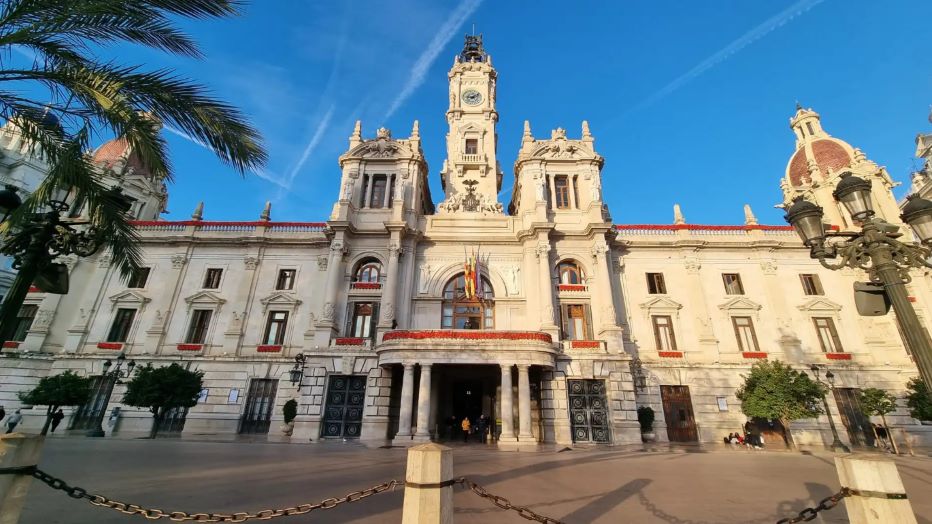
It is made up of two unified bodies: the former Archbishop Mayoral Schools,“Casa de la Enseñanza“, and the building erected in our century, the work of the architects Francisco de Mora y Berenguer and Carlos Carbonell Pañella.
The first block has an academic style in general with Baroque elements in the main doors, and the one built in the 20th century combines Castilian style with Mannerist elements. The definitive settlement of the Municipal Corporation in this building was in 1934 and it is also and important visit among the things to do in Valencia.
Gastronomy in Valencia.
Valencian gastronomy is a feast for the senses. Paella, the region’s emblem, is joined by other delicacies such as fideuà, baked rice and horchata de chufa (tiger nut milk). Its star products include oranges, olive oil and tigernuts.
Tapas such as esgarraet, allipebre or cocas saladas will win you over, while Valencian desserts, such as mistela or pumpkin fritters, will leave you with sweet memories.
To all this we must add the world-renowned Valencian mandarins and oranges.
Don’t miss the opportunity to discover the rich and diverse gastronomy of Valencia, in these things to do in Valencia.
Things to do in Valencia: discover others .
In addition to all the places and stories, visits among these things to do in Valencia, there are other towns and villages with a lot of history and treasures within walking distance. From cutting-edge architecture to historical gems, here are some of the best things to do in Valencia to make the most of your visit.
- Valencia Tourist Card (Museums & Transport): Want to explore hassle-free? The Valencia Tourist Card gives you unlimited public transport access and free entry to many museums, making it one of the most practical things to do in Valencia for travelers who love sightseeing. Check your card here.
- Iglesia San Nicolás de Bari (+ Audioguía): Nicknamed the ‘Sistine Chapel of Valencia’, this church boasts stunning frescoes that will leave you in awe. A visit with an audio guide lets you uncover its rich history—definitely one of the most beautiful things to do in Valencia. Check here your tickets.
- Estadio Mestalla: Football fans, don’t miss a tour of Mestalla Stadium, home of Valencia CF. Step onto the pitch, visit the locker rooms, and experience the magic of one of Spain’s most historic football grounds—one of the most exciting things to do in Valencia for sports lovers. Check here your tickets.
- Palau de les Arts Reina Sofia: This architectural masterpiece isn’t just for opera lovers; the building itself is a must-see. Whether you attend a performance or just admire the futuristic design, it’s one of the top cultural things to do in Valencia. Check here your tickets.
- Iluziona Valencia: Step into a world of optical illusions and interactive exhibits at Iluziona Valencia, a fun attraction perfect for all ages. One of the most entertaining things to do in Valencia, especially for families and photography lovers. Check here your tickets.
- Ciudad de las Artes y las Ciencias: No visit to Valencia is complete without exploring the City of Arts and Sciences, a futuristic complex featuring an aquarium, a planetarium, and hands-on science exhibits. This is one of the most iconic things to do in Valencia and a highlight of the city. Check here your tickets.
- Espectáculo Flamenco Valencia: Experience the passion of flamenco in the heart of Valencia! Whether you’re a first-time visitor or a flamenco enthusiast, this is one of the most authentic things to do in Valencia at night. Check here your tickets.
- Palacio Ducal de Gandía (+ Audioguía): A trip to Gandía isn’t complete without visiting the Ducal Palace, an architectural gem that offers a glimpse into the powerful Borgia family’s history. With an audio guide, you’ll get the full story—one of the best historical things to do in Valencia’s surroundings. Check here your tickets.
- Sunset Sailing Trip: Enjoy a breathtaking sunset over the Mediterranean on a sailing trip departing from Valencia’s marina. It’s one of the most romantic things to do in Valencia, offering spectacular sea views and total relaxation. Check here your tickets.
- Centro de Arte Hortensia Herrero: This contemporary art center showcases impressive exhibitions inside a beautifully restored historical building. If you love modern art, this is one of the most inspiring things to do in Valencia. Check here your tickets.
You can find these and many more recommendations in the DareMapp app.
Access over 50 destinations across Spain and Europe, and join the digital tourism revolution. Everything you need, right in the palm of your hand.
From cultural landmarks to thrilling experiences, these things to do in Valencia ensure an unforgettable trip. Which ones will you add to your itinerary?
Here you have some must see cities near Valencia:
- Cullera
- Sagunto
- Buñol
- Náquera
- Alzira
Remember that with DareMapp you can explore other things to do in Valencia with our guided tours in an interactive way, a fun tourism for the main destinations.
Remember that with DareMapp you can make a multitude of guided tours in an interactive way.
What better way than travelling and discovering while learning in a fun way? Visit our blog to discover lots of tourism tips.


